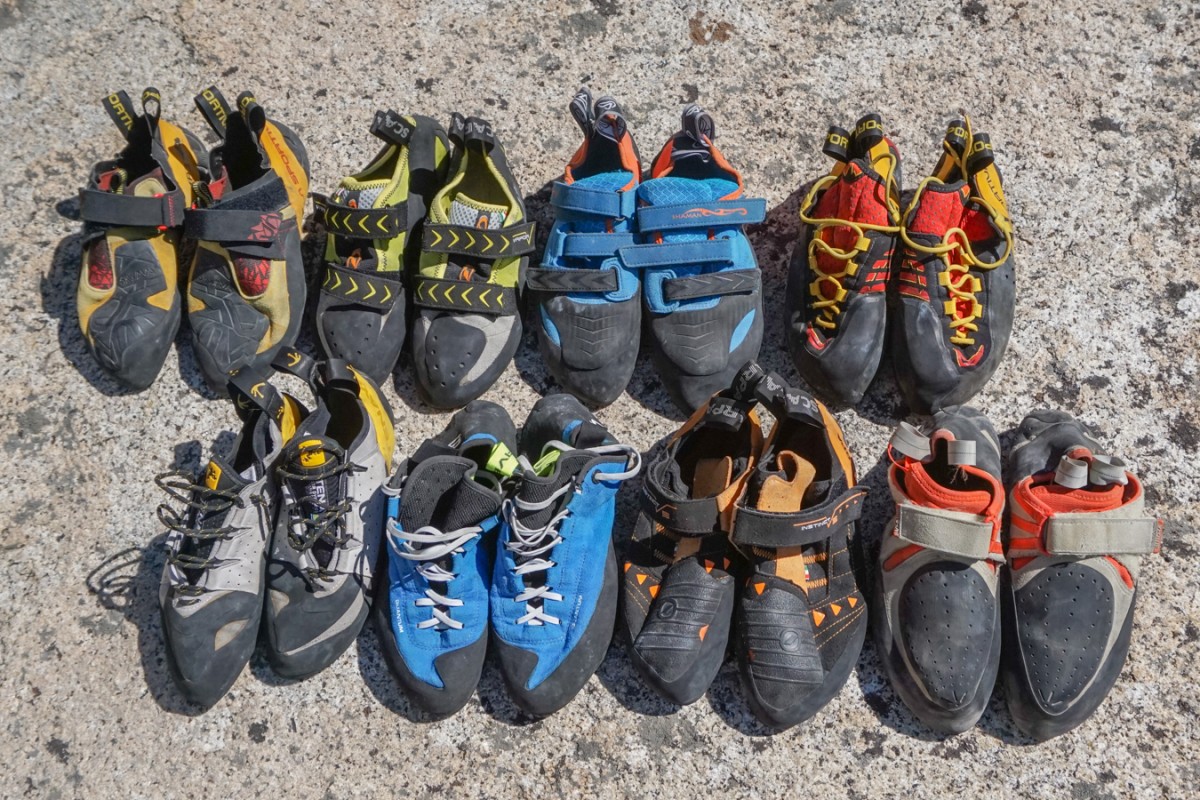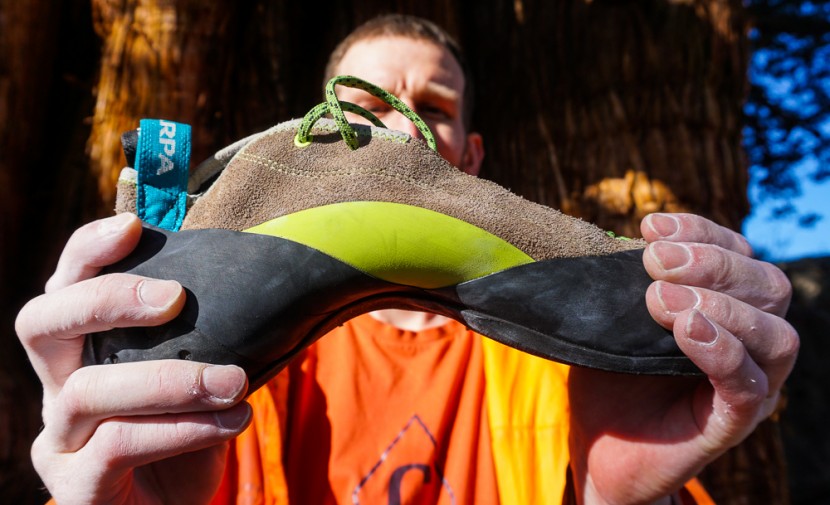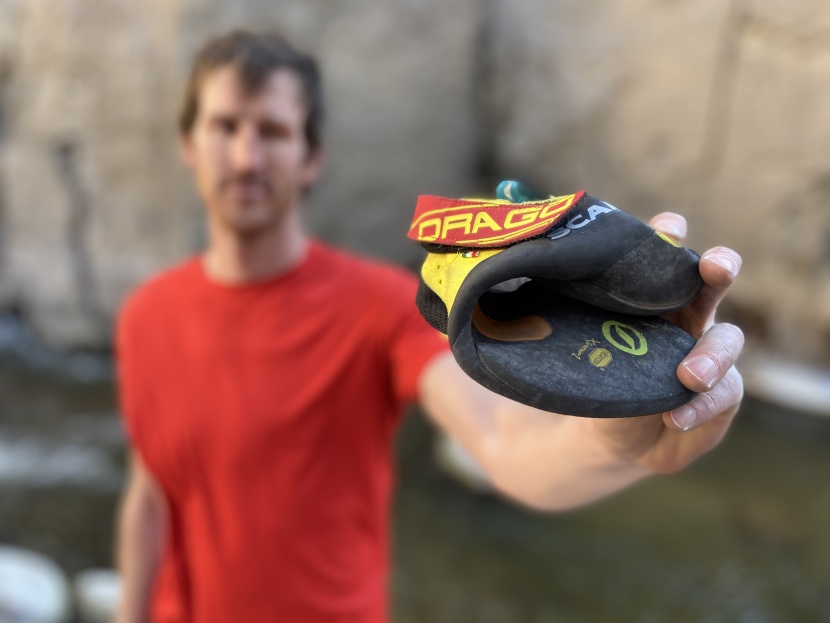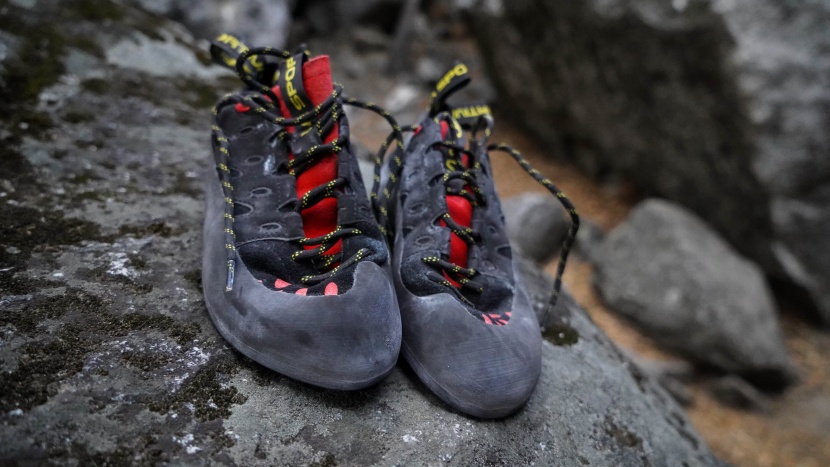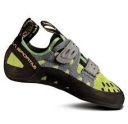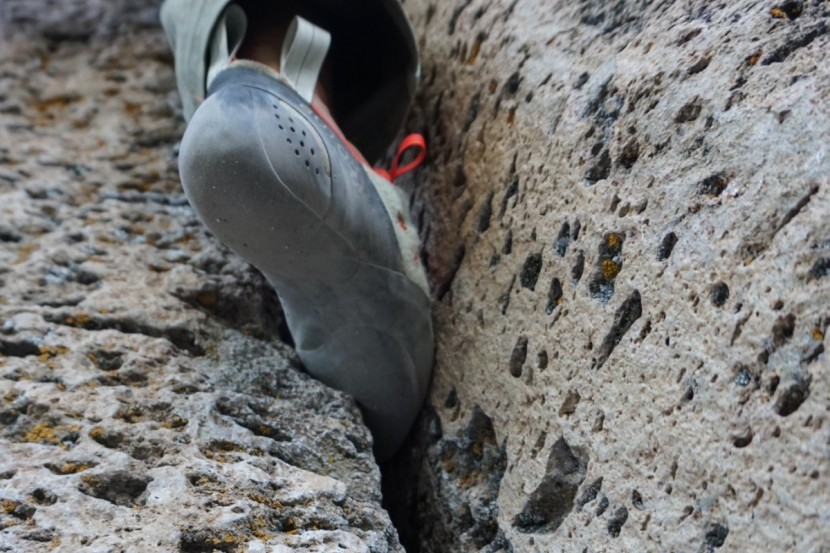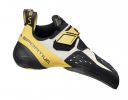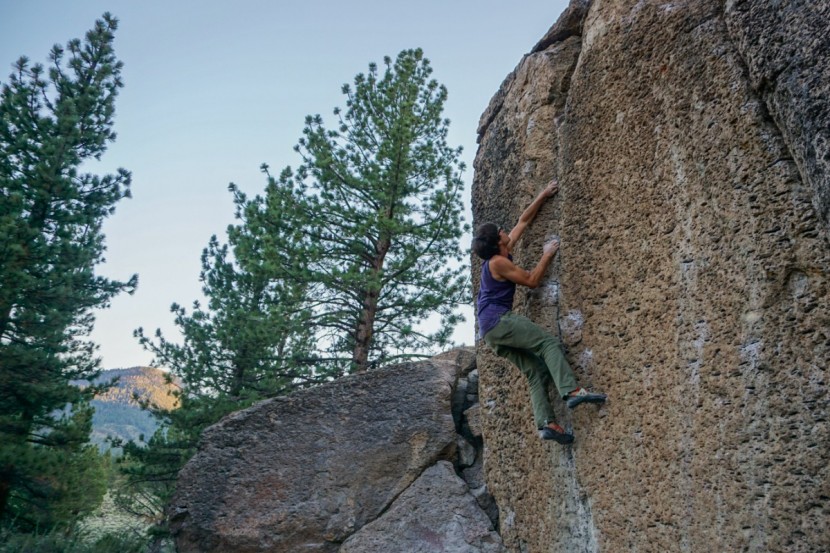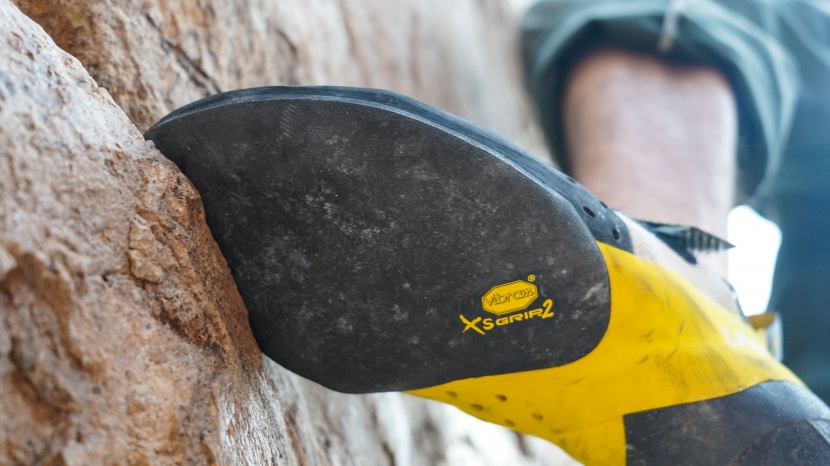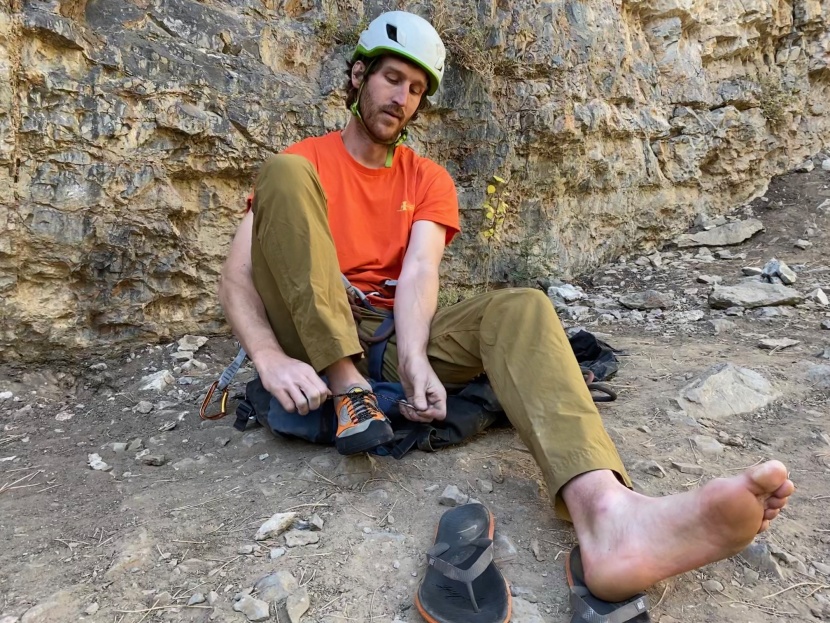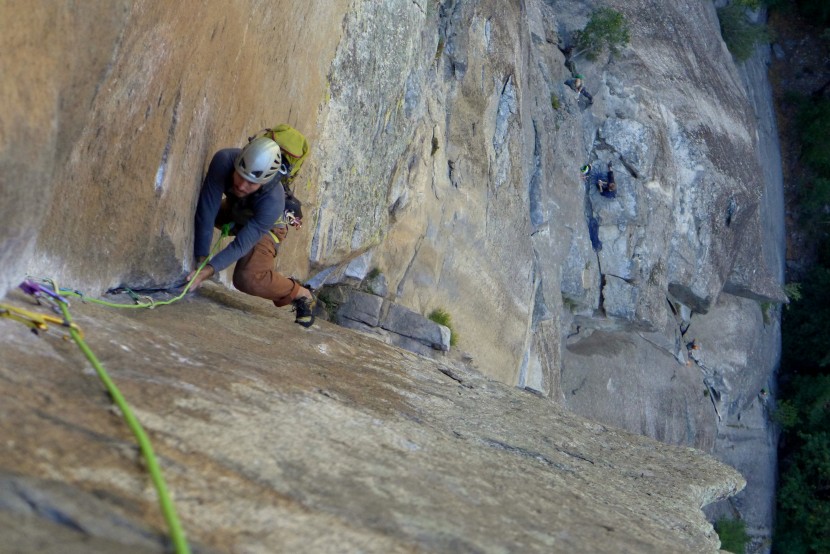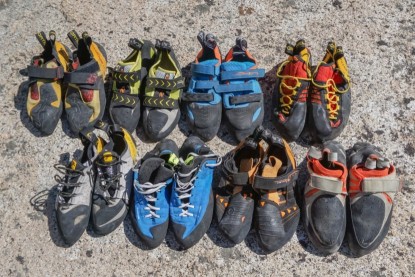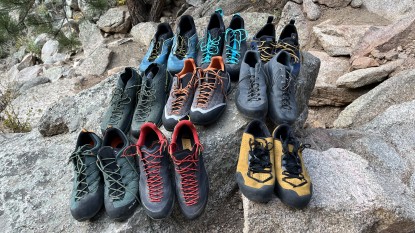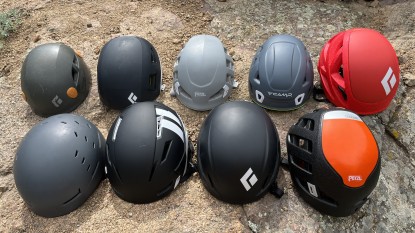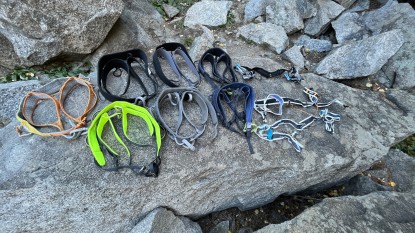So you've spent a few nights climbing in the gym, and now you're ready to jump in the car for a marathon drive to Yosemite to climb its hallowed walls. But first, you have the unenviable task of selecting the right climbing shoes. Sifting through an endless jumble of masochistic designs with fast car names and exorbitant pricetags feels light years away from the routes of your dreams. People like to say nothing great comes easy, but they never warned you about climbing shoe shopping. Fortunately, we're here to help. This buying advice article will help you narrow down the selection so you can spend less time returning bad shoes and more time outside in a vertical paradise.
Styles of Climbing Shoes
What Type of Climbing Will You Be Doing?
Are you trapped in the flatlands, just limited to gym climbing? Do you seek out endless sandstone splitter cracks or steep limestone caves? How about techy granite faces or holdless slabs? There's no shoe that's great at everything. An aggressive downturned shoe is ideal for the steeps, but it isn't going to be very comfortable on a long, low-angle romp. Meanwhile, the opposite is the case for a stiff, high-top, trad model.
Therefore, the first step of climbing shoe shopping should be identifying the type of climbing you plan to do. Then, find a shoe that fits well and matches the plan. To get you started, we've separated the type of climbing into three broad categories that have important implications for shoe selection: trad & crack climbing, bouldering & sport climbing, along with specific suggestions for beginner climbers.
Trad and Crack Climbing
The ability to get your foot inside a crack depends on the size of the crack and the profile of the shoe's toe. A larger profile toe, such as that found on the La Sportiva TC Pro, usually includes additional materials to pad your feet and minimize discomfort. These types of shoes are popular for moderate trad climbs or gaping off-width cracks, but sneaking them into a narrower crack can be challenging. Thus, many climbers prefer a smaller profile on thinner cracks that allows them to fit the maximum amount of their foot inside the crack. The Five Ten Moccasym, for example, has a thin rand and narrow profile, which makes it a common choice for those climbing cracks that are less than hand-size.
The other consideration that affects trad shoe choice is the length of the route. You might be able to endure a bit of foot pain on a single-pitch project, but the same pain would become unbearable on a 1,200-foot ramble. Generally, shoes with a stiffer sole will improve your comfort when standing on edges and help alleviate foot fatigue on longer days. Stiffer shoes, however, reduce sensitivity and can feel clunky even after they're broken in. Supple, sensitive shoes, in contrast, can improve your tactile sensation for the rock but may leave your feet in agony at the end of a long day. For this reason, we generally recommend beginner trad climbers go with a stiffer shoe, at least until their feet have gained the strength to handle a softer shoe.
Bouldering and Sport Climbing
Super steep climbing also frequently involves creative footwork like heel hooks, toe hooks, or gymnastic combinations of the two. Many sport and bouldering shoes thus feature ergonomic heel cups and rubber across the top of the foot for added grip when hooking, such as the designs of the Scarpa Chimera and Butora Acro, respectively.
Where bouldering shoes and sport shoes can diverge is when it comes to the closure mechanism. Boulders generally take their shoes on and off more frequently than sport climbers, so many boulders opt for the convenience of velcro. Sport climbers, in contrast, might wear their shoes for 30+ minutes during burns and often prefer the more precise fit, but reduced convenience, of lace-up models.
Appropriate sizing for steep, hard climbing varies from shoe to shoe. To achieve high-level performance, a shoe may have to be uncomfortable to wear for more than a pitch or two. Our recommendation is to size your shoes to match your own attitude. If you're only focused on pushing the grades, a tight, aggressive shoe might be best for you. If you have a more casual attitude, we recommend a more comfortable shoe with a flatter sole and more generous sizing. Shoes for the steepest climbing styles are often on the soft side to enhance your ability to pull yourself into the wall with your toes. For vertical or less than vertical climbing, it's better to go with a stiffer, more supportive shoe as you balance all of your weight on your big toe. Specialized shoes in either category tend to be on the upper end of the price range.
Beginner Shoes
Shoe companies occasionally offer free demos at climbing gyms, which can be a great opportunity to get a sense of how different designs actually climb. As our testers can attest, the relationship between how a shoe feels on the ground compared to how it feels on the rock is not always an easy thing to assess.
We also advise that new climbers choose inexpensive shoes for their first few pairs because they are likely to wear through rubber quickly while they develop precise footwork. During this learning process, it's common for many people to drag their toes across the wall. Such sloppiness will wear through even the thickest sticky rubber quickly. Within the realm of less expensive shoes, the La Sportiva Tarantulace and Evolv Defy Black are both great options. By the time you wear through a pair or two, your technique will have improved enough that you should be ready to upgrade to a pricier, higher-performance shoe.
Typically, inexpensive, entry-level shoes won't offer the same precision or sensitivity as a premium shoe, but this is not a hard and fast rule. If you find the right shoe, forking out a little extra cash may be worth it to have something that you can grow with and that won't hold you back. Irrespective of the price, your shoes need to be comfortable. Not grandma's slippers comfortable, but something you can easily tolerate wearing for a while.
Fit Considerations
Shape
Feet come in all sorts of shapes and sizes. When you're shopping for climbing shoes, it's important to recognize what kind of feet you have. Is the middle of your foot wide, narrow, or in between? Which toe is longest: your first toe or second toe? We've noticed that testers with narrow feet and a prominent first toe generally prefer narrower shoes, such as those from La Sportiva or Tenaya. Wide-footed testers, or those whose second toe is the longest, seem to favor shoes from brands whose models are usually wider, like Scarpa, Evolv, or Five Ten. If you're not sure how you're feet stack up, consider trying on some Butoras. This company makes most of their shoes in both wide and narrow versions to better match the natural variety of foot shapes. Please keep in mind that our characterizations about brand shape are rough generalizations, and every brand offers a couple of models that seem to fit different foot shapes.
Downturn
Sizing Overview
There is a lot of subjective information out there regarding how you should size your shoes. For sport climbing and bouldering, there seems to be an inverse relationship between the climb's difficulty and your shoe size: as the number grade of the climb increases, the number of your shoe size decreases. Shoes like the Scarpa Instinct, Butora Acro, and La Sportiva Genius are designed to fit particularly tight and perform better because of that snug fit. However, there is a limit to an increasing tightness and increasing performance. If your feet hurt so much that you can't climb, you've gone too far. And foot injuries from overly tight shoes can definitely occur.
On multi-pitch climbs, whether sport or trad, you'll probably want to size your shoes more loosely for added comfort. You can compensate for a slightly larger size by choosing a shoe with a stiffer sole. Even on longer multi-pitch sport climbs, a less aggressive shape can keep your feet from getting thrashed, with a relatively minimal drop in performance. Having a flatter sole can also improve comfort when climbing cracks. If your toes lay flat, the profile of the toe of the shoe can be smaller, making it easier to slide them inside thin cracks.
Brand-specific Sizing
Selecting the right size is one of the biggest cruxes of shoe shopping, especially when shopping online. If you can, go out and try on various brands and sizes before you buy. In our experience, Evolv, Five Ten, and Butora seem to run small, making it possible to size your rock shoes around the same as your street shoes. La Sportiva and Scarpa are pretty consistent but require that you calibrate your street shoe size to their sizing system. For our testers, this means buying these European brands in a size that is 1 to 1.5 sizes lower than our ordinary street shoes. We had to size the narrow shoes from Spanish manufacturer Tenaya two full sizes down from our streets shoe size before our toes were snug against the front of the shoe.
Stretch
The shoe that you take out of the box the first day you climb with it will not be the same after you've worn it for a while. All shoes stretch, some more than others, so it is important to consider the lining of the shoe so you can account for how they might changes as they wear in.
Unlined leather shoes, like the La Sportiva TC Pro or Five Ten Grandstone, stretch more than synthetic shoes, so factor that in when making a purchase. However, an important caveat is that leather shoes with a lining may stretch very little, instead only molding themselves to your feet with little change in overall length. How much should you size down when buying unlined leather shoes to account for stretch? That depends a lot on the brand and model, and there will be a little trial and error here. In general, to get the right fit from your unlined leather shoe, size them a half to a full size smaller, and expect them to be mildly uncomfortable, with the discomfort decreasing as they wear in. The result should produce a comfortable shoe. Unlined slippers like the Five Ten Moccasym can stretch a little more, up to a size and a half. Synthetic shoes hardly stretch at all, so make sure they are fairly true to size when you buy.
Rubber Stickiness
Arguments over rubber have the potential to stratify opinions more than any other aspect of climbing. Really soft rubber that is ultra-sticky will wear out fast. Harder rubber holds an edge longer but doesn't function as well for pasting your foot on the rock. Consequently, we tend to use different rubber types for various applications. Softer rubber for high-performance sport and bouldering shoes will typically perform better for everything except micro edges. For vertical testpieces or when just starting out as a climber, harder, more durable rubber is probably the better choice.
Closure Systems
There are three main types of closure systems: velcro straps, ordinary laces, and closure-less slippers. Lace-up shoes offer the most adjustability and typically provide the most secure, customizable fit for your rock shoes. All those strings, however, make them a little slower to put on and take off. For this reason, lace-ups models are often designed for roped climbing where you will wear them longer and don and doff less frequently. Velcro shoes go on and off easier, and some of the smarter designs can tighten almost as well as lace-ups. For sport, bouldering, or gym climbing, velcro shoes are a great choice because of the number of transitions between street shoes and rock shoes you will make in a day. They can work well on multi-pitch days too because it's easy to pop the velcro for a little relief at the belay. Slippers are arguably the most sensitive and comfortable shoes out there. They are also generally unlined, which means they stretch and form to your feet more. This makes them more comfortable but can also decrease their performance on small edges. They are very easy to take off and make great gym or bouldering shoes, and the minimalist upper often means that they are easy to sneak in to thin cracks.
Be aware that laces can wear out or get torn up by cracks. So be ready to replace them when they start to get shredded. Velcro can get mucked up with debris if you leave it open when you're storing the shoes. Keep the velcro closed when you're not using your shoes, and it will keep the hooks and loops clean while helping to maintain the shape of the shoe longer.
Conclusion
Selecting the right climbing shoe is an unfortunately complicated task. Our best advice is to begin by determining which type of climbing you're hoping to do. Trad and crack climbing shoes can be more comfortable with stiffer, flat-soled shoes. Bouldering and sport climbing, in contrast, are often easier with aggressive downturned designs and a softer sole for added sensitivity. No matter what, we suggest trying as many shoes as possible. With experience, it won't be long before your cruising your project in the perfect pair of sticky rubber rock slayers.

